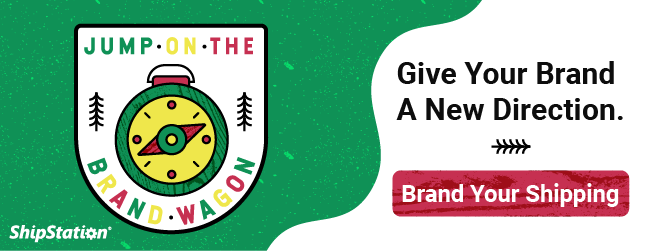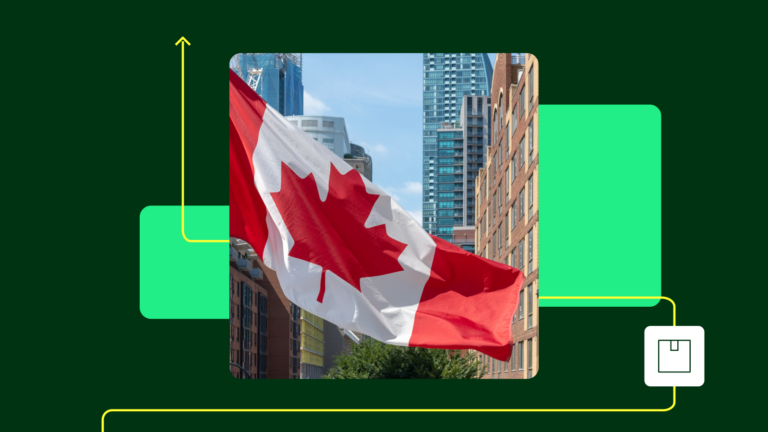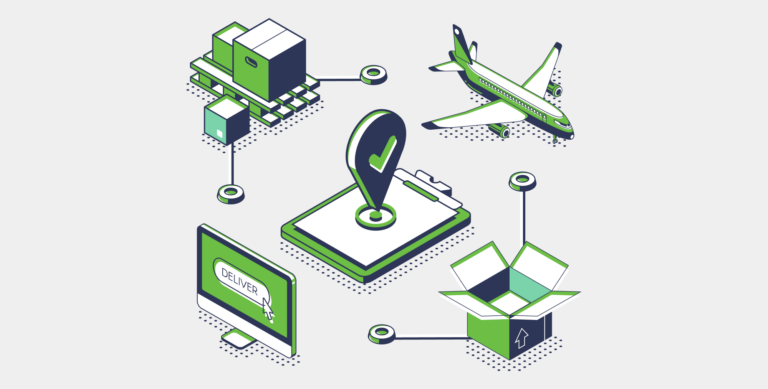3 Types of Facebook Messenger Ads You Should Be Using

Facebook’s algorithm change has made it more difficult for companies to achieve a strong organic reach and get towards the top of the News Feed. As a result, Facebook ads are becoming more important than ever.
Facebook ads come in various forms and placements throughout Facebook. But an option you may have not considered is using Facebook Messenger ads. Messenger ads are different than typical ads on Facebook. They can offer more options for personalization, retargeting, and starting conversations with customers.
This post will go into detail about why your company should consider using Facebook Messenger ads and the different types of Messenger ads available.
The Rise of Messaging Apps
A messaging app is an app that allows people to send and receive messages to each other via a mobile device or computer. The messages are usually in text form. But several messaging apps, such as Facebook Messenger, allow people to live video chat, as well.
Messaging apps have become increasingly more popular over the last couple of years. In fact, the top four messaging apps (Messenger, WhatsApp, WeChat, and Viber) have more monthly users than the top four social networking apps (Facebook, Twitter, Instagram, and Google+).
Messaging apps are becoming a standard tool for companies to connect with people, provide customer service, and drive sales. According to a Facebook-commissioned Nielsen study, 61% of the people surveyed said they like getting personalized messages from businesses. And 67% said they expect to message businesses even more over the next two years.
Additionally, 53% of people are more likely to shop with a business they can message directly. And 56% of people would rather message than call customer service.
Why Brands Should Use Facebook Messenger
Messenger, Facebook’s private messaging app, is the most installed messaging app. And it’s the largest messaging app in the U.S., with 1.3 billion active users. It’s no surprise Messenger is becoming a common medium for businesses and consumers to connect. Every month, businesses and consumers exchange 2 billion messages on the Messenger app, according to Facebook’s internal messaging data.
Due to this desire for a more personalized and interactive experience with companies, as well as instantaneous results, Messenger can be a more effective platform for content delivery than traditional sources like emails and phone calls.
A study conducted by Hubspot compared using Messenger for content delivery vs. email. Messenger had an 80% open rate and 13% click-through rate. It also outperformed email by 242% and 619%, respectively. This doesn’t mean your company should stop sending out emails. But you should consider delivering some information to your audience through Messenger.
Besides speaking with customers, companies can also use Facebook Messenger to deliver ads.
Types of Facebook Messenger Ads
There are several types of Facebook Messenger ads. These range from traditional ad placements to more personalized and conversational options. This section will go into detail about what the different kinds are, what kind of audience they can target, and the types of campaigns you can use them for.
Messenger Inbox
If you are just starting out with Facebook Messenger ads and you want something simple, Messenger Inbox ads are a good place to start. These ads are appropriate for a variety of businesses, whether big or small.
Messenger Inbox ads are similar to traditional Facebook ads except they appear on the home screen of Facebook Messenger. Messenger Inbox ads ads are listed as Sponsored and include the following:
- The company’s Facebook profile
- Text and an image
- A call-to-action (CTA), such as Learn More or Shop Now
Usually, companies choose the link to take people to their website. Here’s an example of a Messenger Inbox ad:
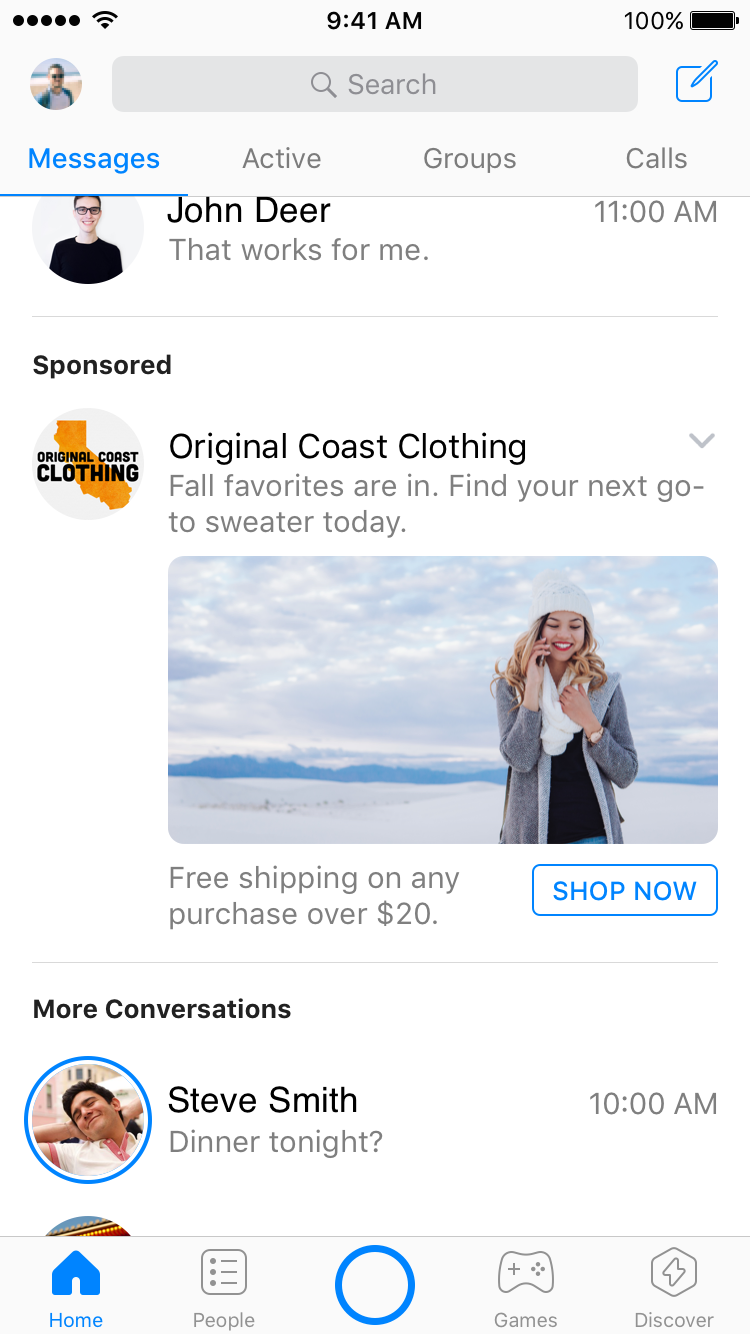
(Source)
Oberlo recommends these design specifications for a Messenger Inbox ad:
- File type: .jpg or .png
- Ratio: 1.91:1
- Resolution: At least 1200px x 628px
- Text: 125 characters
- Headline: 25 characters
- Link description: 30 characters
Keep in mind ads that consist of more than 20% text may experience reduced delivery.
If you are using automatic placements for your ads, your ads are already appearing in Messenger. Currently, there isn’t an option for your ads to exclusively show in Messenger.
Autoplay Videos
Originally, Messenger Inbox ads were only static images. But Facebook has recently been testing out the option to allow companies to place autoplay video ads. At the time of writing, Facebook is testing video ads only on a small group of people to see how they respond to the ads.
There is speculation and criticism of whether this option will last and be successful, claiming people will find it too annoying. If people aren’t happy and express their frustration with video ads on Messenger, this option could get pulled.
Despite the mixed feedback and doubt in regards to autoplay video ads on Messenger, static ads haven’t affected how often people use the messaging app. So they seem to be here to stay.
For a step-by-step guide on how to set up Messenger Inbox ads, check out this article by Social Media Examiner.
click-to-Messenger
Another option is click-to-Messenger ads. click-to-Messenger ads are part of campaigns and have a specific goal/CTA. You can use click-to-Messenger ads to attract new audiences or retarget customers. These ads appear on Facebook News Feeds and include a Send Message button.
When a person presses the Send Message button, they are directed to a chat with the company on Messenger. An automated message by the company will then appear. This message could be text or a combination of text, images, video, or links. Here are two examples:
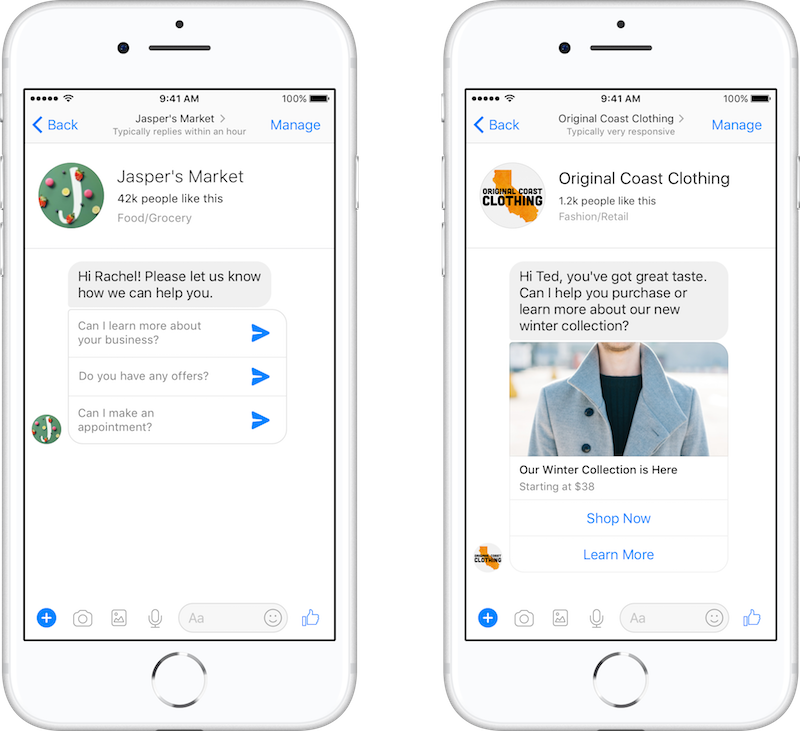
(Source)
There are several ways you can use destination ads. For example, you can give people the option to …
- Book a service
- Sign up for a webinar or event
- Opt-in to updates from the company
- View a new collection
- And more
Make sure to track your conversions so you can see how successful your ads are.
For assistance on how to set up a destination ad, you can go to this Facebook article.
Sponsored Messages
Last but not least, are sponsored messages, which are the most personal and conversational of the three. Sponsored messages are where companies directly reach out to individuals by sending them a message on Messenger.
Sponsored messages can only target people your company has previously had a conversation with via Facebook Messenger. And users have the option to block sponsored messages from a company. This is to prevent companies from spamming people on the platform. As a result, the purpose of this ad is to retarget users that have already interacted with your brand.
Like click-to-Messenger ads, sponsored messages give you the option to add photos and links in the chat. The content of the sponsored message depends on the objective of the campaign. Some ways you can use sponsored messages are …
- Sending promotions
- Encouraging people to sign up for a webinar
- Telling them about an event
- Reminding them of an item they abandoned in their shopping cart
Here’s what sponsored messages look like:
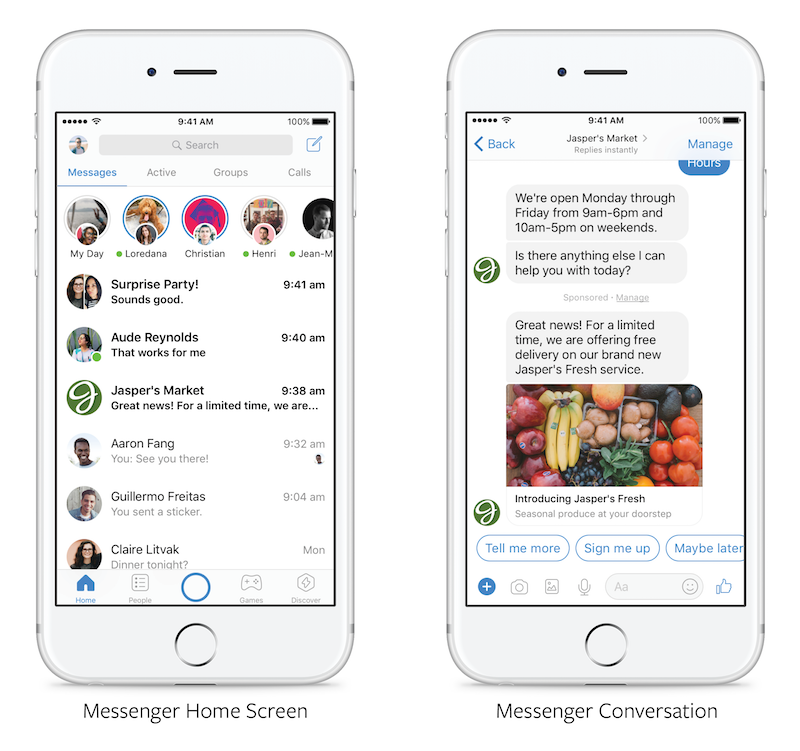
(Source)
Sponsored messages can be a great way to retarget leads. They can lead to a conversation where you find out what is preventing the customer from completing a purchase or using your services. Even if it doesn’t lead to a purchase, it can provide valuable information about your target demographic and how to improve in the future.
NOTE: Facebook charges by impression, so you are charged for these ads whether the person opens the chat or not.
For more details on how to set up a sponsored messages, here’s an article from Oberlo.
Next Steps
If email marketing and publishing ads that direct people to your website aren’t bringing in the results you hoped for, try reaching out to your target demographic through Facebook Messenger.
Facebook Messenger ads fit people’s desire for personalized, conversational, and engaging content. They also work well if you have a specific CTA and objective you’re trying to reach. To fully take advantage of Messenger ads, your company, whether through live chat or chat bots, will want to use the messaging app as a platform for customer service and conversation so you can use features like sponsored messages.
